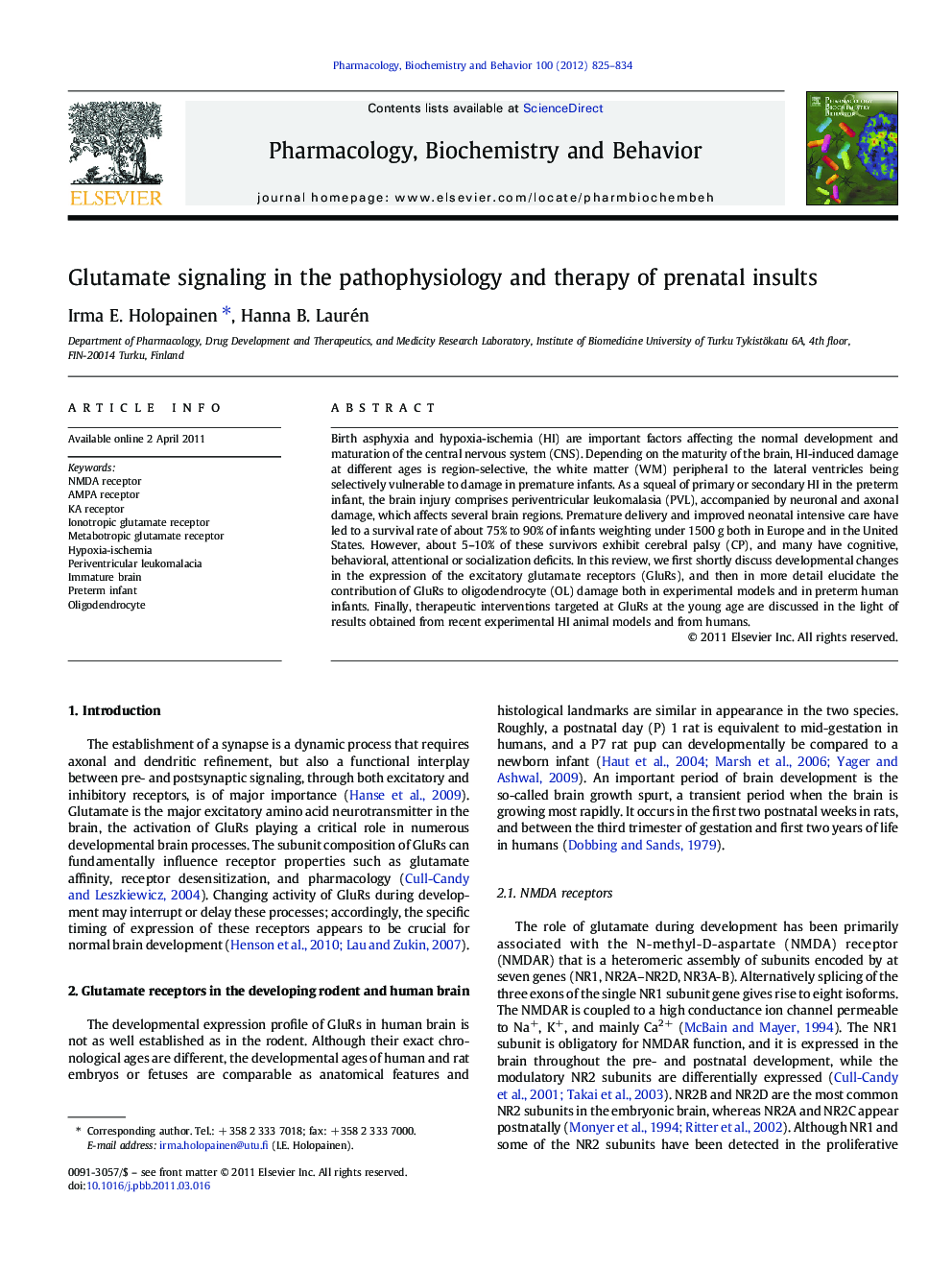| Article ID | Journal | Published Year | Pages | File Type |
|---|---|---|---|---|
| 2013113 | Pharmacology Biochemistry and Behavior | 2012 | 10 Pages |
Birth asphyxia and hypoxia-ischemia (HI) are important factors affecting the normal development and maturation of the central nervous system (CNS). Depending on the maturity of the brain, HI-induced damage at different ages is region-selective, the white matter (WM) peripheral to the lateral ventricles being selectively vulnerable to damage in premature infants. As a squeal of primary or secondary HI in the preterm infant, the brain injury comprises periventricular leukomalasia (PVL), accompanied by neuronal and axonal damage, which affects several brain regions. Premature delivery and improved neonatal intensive care have led to a survival rate of about 75% to 90% of infants weighting under 1500 g both in Europe and in the United States. However, about 5–10% of these survivors exhibit cerebral palsy (CP), and many have cognitive, behavioral, attentional or socialization deficits. In this review, we first shortly discuss developmental changes in the expression of the excitatory glutamate receptors (GluRs), and then in more detail elucidate the contribution of GluRs to oligodendrocyte (OL) damage both in experimental models and in preterm human infants. Finally, therapeutic interventions targeted at GluRs at the young age are discussed in the light of results obtained from recent experimental HI animal models and from humans.
Research highlights► Basic developmental changes in glutamate receptors (GluRs) in the rodent and human brain. ► The role of GluRs in premature brain pathology, such as hypoxic-ischemic (HI) injury and consequent periventricular leukomalasia (PVL). ► Therapeutic interventions of HI with drugs targeted at GluRs and at selected other regulatory systems in immature rodents.
